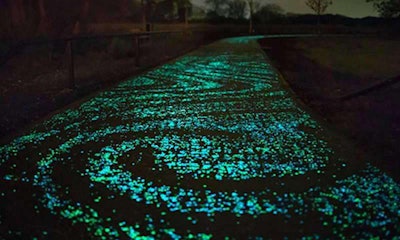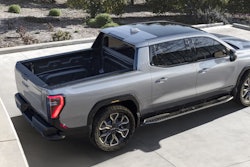 Rubio’s concrete formula absorbs solar energy and emits blue and green light in the dark. Photo credit: Investigatión y Desarrollo
Rubio’s concrete formula absorbs solar energy and emits blue and green light in the dark. Photo credit: Investigatión y DesarrolloIn the hopes of one day lighting highways without the need of electricity, a Mexican researcher has developed a unique formula of concrete that would not only glow in the dark, but last for a century.
According to a report from Phys.org (via Investigatión y Desarrollo), Dr. José Carlos Rubio of the University of San Nicolas Hidalgo in Michoacan, has modified “the micro-structure of the cement,” allowing the concrete to “absorb solar energy” and re-emit it as light.
“The main issue was that cement is an opaque body that doesn’t allow the pass of light to its interior,” Rubio explained to Investigatión y Desarrollo. He says this is caused by the crystal flakes that form when cement dissolves in water and begins to become a gel.
By modifying the structure of cement, Rubio says he has eliminated these crystals, allowing the cement to gel completely. The change not only allows the concrete to absorb the sun’s energy however. Rubio says the concrete is also resistant to sun damage and estimates the material’s lifespan at 100 years.
In the dark, the concrete emits a blue or green light and Rubio says the intensity of the light can be managed in order to avoid distracting drivers.
Rubio says the concrete is also green in another way: during manufacturing the only emission is water steam.
Rubio is working to bring his glow-in-the-dark concrete to market and is also testing it in plaster and other construction materials.









